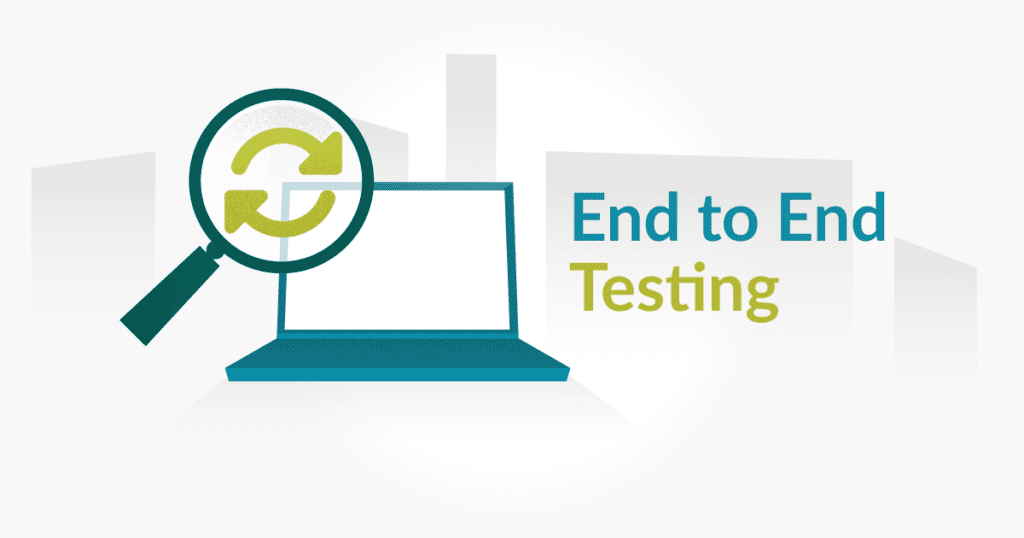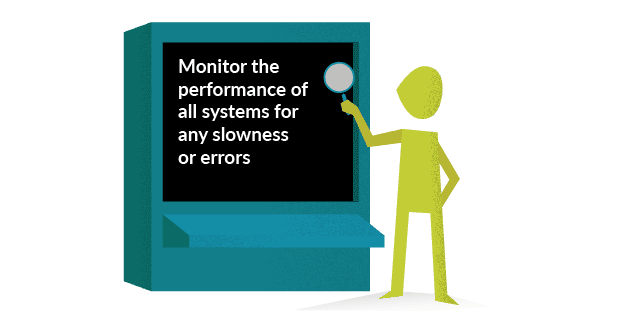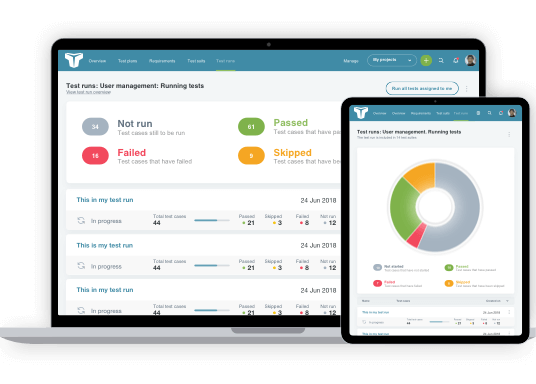Software testing is critical in the software development life cycle, especially with systems becoming increasingly complex and customers expecting even more from technology. One of the best ways to confirm the overall quality of software products is to conduct end-to-end testing.

What is end-to-end testing?
End-to-end testing (often abbreviated to E2E) examines the entire system. User interfaces, backend databases, and servers are all put under the microscope in this type of testing. All components are tested as a combined unit and assessed on how well they integrate within the product. This is one of the biggest differentiators with end-to-end testing.
The software testing technique examines not only the software’s development but also the product’s designed functionality. End-to-end testing checks the entire stack from the user’s perspective. Complete workflows and scenarios are tested to ensure all components are ready for the real world.
Why is it necessary to test end-to-end?
End-to-end testing is significant in scope, meaning test coverage can be extensive. As software products depend on more microservices and integration points, all pieces must work together according to user needs. This testing approach helps identify performance bottlenecks, security vulnerabilities, data inconsistencies, and usability problems across the system.
End-to-end testing simulates the user experience in real-world scenarios and aims to verify their workflows. In addition, it ensures that sub-systems and integration points can work together and separately. Examining the software end-to-end reduces the chances of critical systems failing in production.
Automatic or Manual?
Both automatic and manual testing can be leveraged for end-to-end testing. Traditional manual testing is still required, though, because many interfaces are difficult to automate. However, some scenarios are better suited to automation, so can help save time and cost. With that said, it’s imperative to balance the amount of automation used because the purpose of E2E testing is to examine from the user’s perspective, which is hard for a computer to do. This is why manual methods should always play a role in end-to-end testing.

Furthermore, automated testing can often be deprioritized because writing tests takes time and effort, so leaving E2E tests fully manual. However, combining manual and automated testing will increase test coverage and find more defects.
Examples of end-to-end testing
Here are two examples for a clearer understanding of this type of testing.
Example 1: Logging in
At face value, this seems simple. However, testing the login process can touch various sub-systems such as Single-Sign-On, SAML, Google Auth, etc. Therefore, include each type of login scenario to ensure complete testing.
Example 2: Signing up for a SaaS product
Testing the signup process involves more than entering a username and setting a password. For a SaaS product, an E2E test for “sign up” should include landing on the website, registering, onboarding, and navigating to the dashboard.
Notice how expanded both example tests are in their attempts to replicate real-world scenarios.
How to perform end-to-end testing
The order in which certain types of tests are performed is just as important as whether they run at all. Testing in the wrong order can result in wasted time and effort. Instead, end-to-end testing should occur after completing unit and integration testing but before starting user acceptance testing. Testing in this order ensures critical components are tested together before the user experiences them in UAT.
Tips for conducting successful tests
- Access the application as though you were the user. Go through the motions of what you believe a real-life user would do.
- Prepare test data ahead of time. Usable test data can take time to compile, so plan accordingly.
- Leverage both automated and manual testing when feasible to do so.
- Monitor the performance of all systems for any slowness or errors.

- Collaborate across the entire team and leverage exploratory testing for increased coverage.
- Link the tests to the deployment pipeline so the E2E test script is performed in the correct sequence when code is deployed.
Pros and cons
Software teams can select from several types of testing to support the quality of their products. However, each testing type has strengths and weaknesses depending on use, so employing a broad range of testing approaches is the best choice. Here are some of the pros and cons to consider.
Pros:
- Reduces the number of defects in production
- Expands test coverage by verifying all systems work together (even 3rd party systems which might not be tested otherwise)
- Verifies real-world user flows
- Tests are easily repeatable
Cons:
- If manual, can be slow to execute
- Can be difficult to create when automated
- Due to fragility, can require continuous updates to ensure reliability
- Finding the exact defect might take longer or require more research than when testing a specific or more granular unit or integration test
Conclusion
Although end-to-end testing can, in many cases, be time-consuming, it offers an excellent opportunity to deliver high-quality products to your customers. By testing from the mindset of users and covering a wide range of inter-connected functionality, you can achieve a comprehensive view of your product’s quality. From there, you will have a clearer understanding of how near the product is to release viability and if any further testing is necessary.

